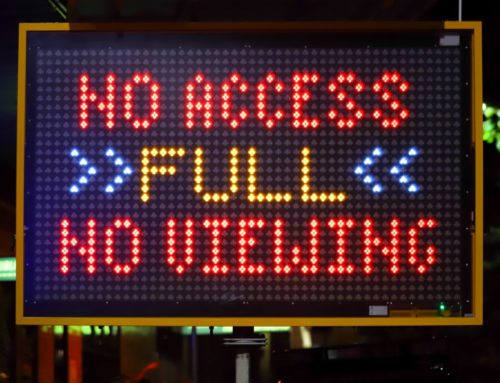Can you help me answer this question?
“My name is Matt Silva, and I work for a nonprofit based in San Francisco called EARN. At EARN, we give low-income working families the power to create prosperity for generations. I’m a member of EARN’s first-ever communications team, and we’re thinking strategically about what roles and functions we’ll need to fill for the coming year.
I was wondering if you’d be willing to share any insights or resources into how best to setup a communications team at a nonprofit. We love the best practices you’ve shared, and are now looking for information related to the actual positions a nonprofit communications team should fill, and what each of those roles should be doing.
Right now, we’re two full-time people with a half-time Director (she shares her time with Development). I think what we’re finding is that, like most organizations, PR, branding, marketing, and online engagement (including social media) will all be important functions for us. Perhaps a better way to frame my question is this: what skill sets do you think a two- to three-person team should have?
Any help would be much appreciated.”
Great question, Matt, and one I know a lot of you have opinions about! Here’s my take . . .
Naturally, the actual structure of a communications team is going to vary based not only on the needs and goals of the organization, but on what actual team members are good at and what they themselves enjoy doing.
Here’s one way to approach your questions. I’ve listed what I consider to be three essential skills/roles for a marketing team for long-term, sustainable success.
I’m not talking about tactical skills/roles (who can best engage supporters on Facebook, who writes the best newsletter headlines), but rather what you as a team need to accomplish.
As you noted, everyone on the team will be responsible for all of these at some basic level, but I believe that each of these items is so important that they demand someone to be assigned as the “lead” staff person. How you mix and match these into specific job descriptions depends on the actual people involved.
Continuously Learning about Your Supporters
Someone should be responsible for actively seeking and capturing information about your target audiences and then regularly sharing the trends with the team. This is absolutely essential to getting your messages right and picking the right communications channels.
This can include everything from what we often call “listening” in social media, to doing surveys and focus groups throughout the year, to making sure that your databases are set up to easily segment your mailing lists, to watching analytics on your website, email marketing, Facebook, etc.
While another team member may be closer to Facebook Insights on a daily basis, for example, the lead for this particular role would be the person who looks for the trends over time, and compares those to data from other sources. Because this person will be putting different pieces of the puzzle together, he or she may also be the best one to identify ways to tap into your social capital (e.g. who are your biggest fans, and how can you better tap into their networks).
Ensuring Your Messaging is Both Consistent and Responsive
While you should decide as a team what your key messages and calls to action are during any given period (e.g. over a campaign or story arc of a few weeks or months), it’s helpful to have someone tasked with keeping the team “on message” but — and equally importantly — watching for good times to redirect your messaging so that you can highly responsive to breaking news or hot conversations in your space.
It’s a delicate balancing act: Communicating consistently over time so that your core messages and calls to action get through, but being flexible enough to respond to what’s happening around you (including newsjacking, which I’ll talk about in a later post). It’s too easy for individuals to stray off message, and to miss real-time opportunities to connect to what people are already talking about, which is why I think it’s best to give someone this responsibility directly.
Managing the Content Creation and Delivery Process
Everyone on the team will be creating content, and probably delivering the content too (posting to Twitter, setting up bulk email messages, giving in-person presentations). But one person needs to be responsible for the bird’s eye view of the process and the editorial calendar to ensure that the what, when, who, where, how and why of communications makes sense to the people on the receiving end.
Are your supporters or clients getting the right messages at the right times in the right places over weeks and months? Communications teams often get so caught up (and head down) in producing and sending out all the stuff on the day’s or week’s to-do list that they fail to see how it all fits together over time. Providing that focus — and helping other team members adjust as needed — should be someone’s specific responsibility.
These three roles are highly interrelated, which is why I think it’s good to distribute them among different staff. It will force more strategic conversations to take place regularly, as you are feeding each other information and holding each other accountable.
What Do You Think?
What do you think of Matt’s question and my answer? I’m also happy to create a more specific tactical list of job responsibilities if that would be helpful. But I do believe these roles are incredibly important and often overlooked. Failure to address these responsibilities leads to overworked, and under-performing, teams.
Please add your voice to the comments . . . if you reading this in your inbox or feed reader, click over to the blog to participate in the conversation.





